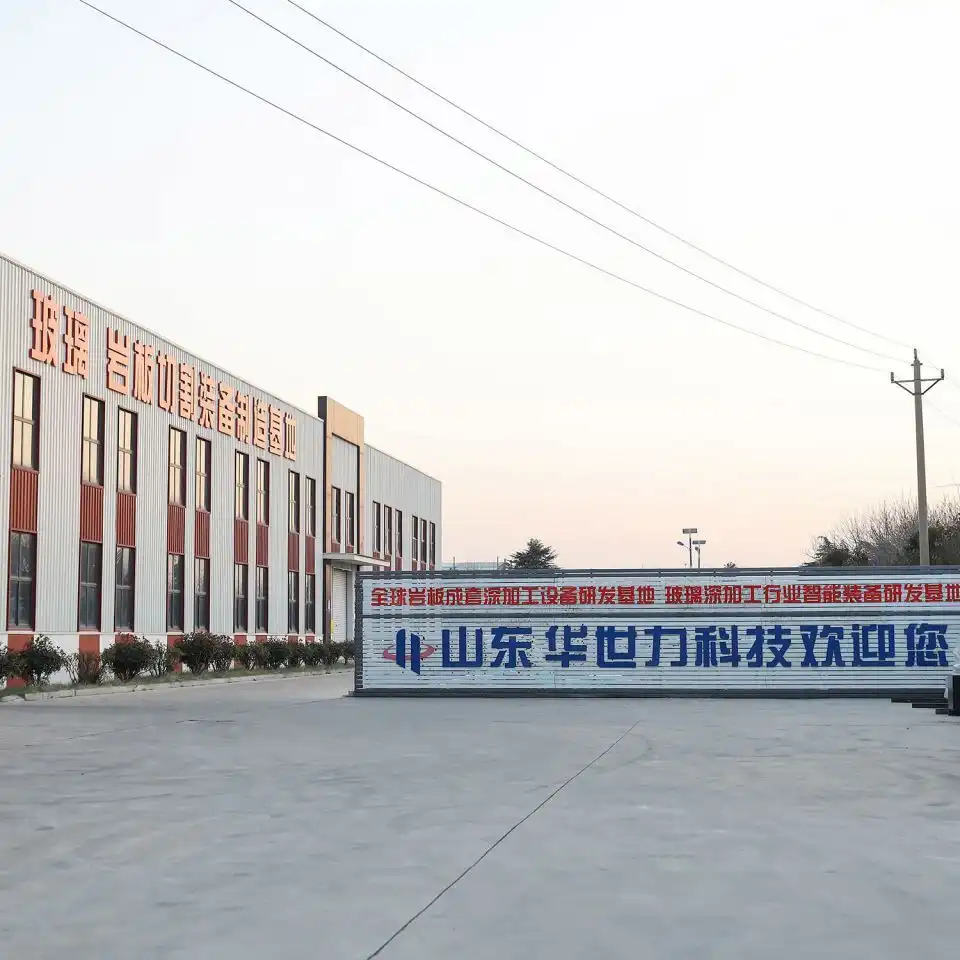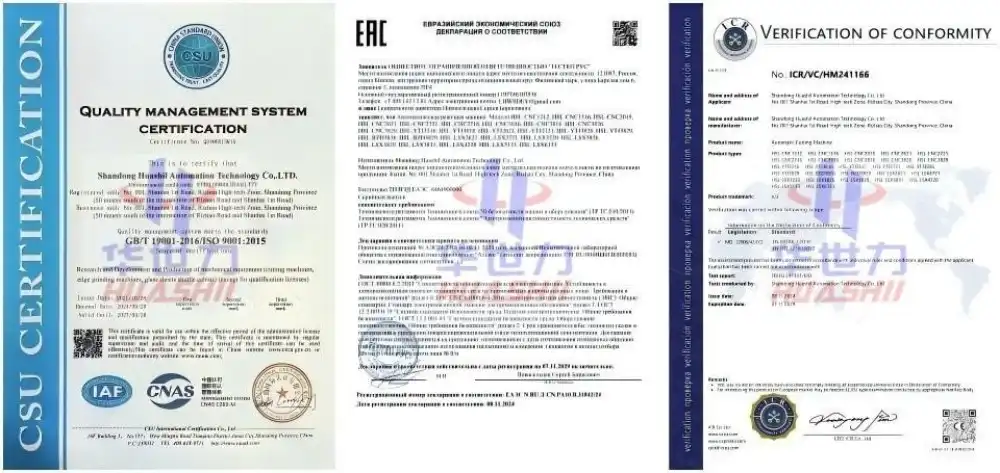In the realm of glass manufacturing, innovation is the key to staying ahead. The advent of multi-axis glass cutting line machines has revolutionized the industry, offering unprecedented precision and versatility. These cutting-edge systems are transforming the way we approach glass fabrication, opening up new possibilities for design and efficiency. As we delve into the world of multi-axis magic, we'll explore how these advanced machines are reshaping the landscape of CNC systems in glass cutting. From intricate 3D cutting capabilities to unparalleled precision control, these technological marvels are setting new standards in the industry.
3D Cutting Capabilities: Beyond Flat Surfaces
Gone are the days when glass cutting was limited to two-dimensional planes. Multi-axis glass cutting line machines, especially those manufactured in a China glass cutting line machine factory, have shattered these constraints, introducing a new era of three-dimensional cutting capabilities. This groundbreaking technology allows for the creation of complex shapes and contours that were once thought impossible or impractical to achieve.

Imagine a world where curved glass panels seamlessly integrate into architectural designs, or where automotive windshields are crafted with perfect aerodynamic properties. These are no longer futuristic concepts but present-day realities, thanks to the 3D cutting capabilities of multi-axis systems.
The ability to cut along multiple axes simultaneously enables these machines to tackle intricate geometries with ease. From spherical forms to undulating surfaces, the possibilities are as vast as the imagination of designers and engineers. This newfound freedom in glass shaping is not just about aesthetics; it's about pushing the boundaries of functionality and performance in various industries.
In the automotive sector, for instance, multi-axis cutting allows for the production of windshields with built-in heads-up display capabilities. These advanced windshields can project information directly onto the glass, enhancing driver safety and convenience. Similarly, in the field of architecture, these machines facilitate the creation of structurally complex glass facades that can optimize natural lighting and energy efficiency in buildings.
The precision of 3D cutting also extends to the realm of smart devices. As the demand for curved and uniquely shaped screens grows, multi-axis glass cutting machines are rising to the challenge. They can produce glass components for smartphones, smartwatches, and other wearable technologies with astonishing accuracy, ensuring a perfect fit and optimal performance.
Moreover, the versatility of these machines is not limited to cutting alone. Many multi-axis systems incorporate additional functionalities such as drilling, milling, and polishing. This all-in-one approach significantly streamlines the production process, reducing the need for multiple machines and minimizing the risk of errors that can occur when transferring workpieces between different stations.
Precision Control: Multi-Axis vs. Traditional CNC
When it comes to precision, multi-axis glass cutting line machines are in a league of their own. While traditional CNC systems have served the industry well, the multi-axis approach takes accuracy and control to new heights. Let's examine the key differences and advantages that set these advanced machines apart.
Traditional CNC machines typically operate on three axes: X, Y, and Z. This configuration allows for movement in three dimensions, which is sufficient for many basic cutting tasks. However, multi-axis systems can incorporate additional rotational axes, commonly referred to as A, B, and C. These extra axes enable the cutting tool or the workpiece to rotate, tilt, and swivel, dramatically expanding the range of possible cutting angles and shapes.
The enhanced flexibility of multi-axis machines translates into several tangible benefits:
- Increased Accuracy: By approaching the glass from multiple angles, multi-axis machines can achieve cuts with unprecedented precision. This is particularly crucial when working with complex shapes or when tight tolerances are required.
- Reduced Setup Time: With the ability to perform multiple operations without repositioning the workpiece, multi-axis systems significantly reduce setup time and the potential for human error.
- Improved Surface Finish: The freedom to orient the cutting tool at optimal angles results in cleaner cuts and superior surface finishes, often eliminating the need for additional polishing or finishing steps.
- Enhanced Efficiency: Multi-axis machines can complete complex cutting tasks in a single setup, dramatically reducing production time compared to traditional methods that might require multiple setups or machines.

The precision control offered by multi-axis systems extends beyond just cutting. These machines often incorporate advanced sensing and feedback mechanisms that continuously monitor and adjust the cutting process. This real-time adaptation ensures consistency and quality, even when working with glass sheets that may have slight variations in thickness or composition.
Moreover, the glass cutting line machine made in China has become a prominent choice for many manufacturers seeking high precision and efficiency in their operations. These machines are known for their advanced features and reliable performance, contributing significantly to the industry's overall productivity.
Furthermore, the software that drives these machines has evolved to match their hardware capabilities. Sophisticated CAD/CAM programs now allow designers and operators to fully leverage the potential of multi-axis systems. These software solutions can optimize cutting paths, predict and compensate for tool wear, and even simulate the entire cutting process before a single piece of glass is touched.
The combination of hardware precision and software intelligence in multi-axis machines is revolutionizing quality control in glass manufacturing. Tolerances that were once measured in millimeters can now be controlled down to microns, opening up new possibilities for high-precision applications in industries such as aerospace, medical technology, and scientific instrumentation.
Expanding Design Possibilities with Multi-Axis Technology
The advent of multi-axis glass cutting line machines has not just improved existing processes; it has expanded the realm of what's possible in glass design and manufacturing. This technology is empowering designers, architects, and engineers to bring previously unimaginable concepts to life.
One of the most exciting areas where multi-axis technology is making waves is in the creation of sculptural glass elements. Artists and designers can now craft intricate glass sculptures with complex internal structures, seamlessly blending art with engineering. These pieces can range from small decorative objects to large-scale installations that serve as centerpieces in public spaces or corporate environments.
In the world of architecture, multi-axis cutting is enabling the creation of load-bearing glass structures that were once thought impossible. Architects can now design buildings with glass staircases, bridges, and even structural supports that are not just visually stunning but also meet rigorous safety standards. The ability to cut and shape glass with such precision allows for innovative joining techniques and stress distribution, pushing the boundaries of what glass can do in construction.
The automotive industry is another sector benefiting from the expanded design possibilities. Multi-axis machines are facilitating the production of panoramic roofs with complex curvatures, enhancing both the aesthetics and aerodynamics of vehicles. Additionally, these machines are instrumental in creating advanced driver assistance systems (ADAS) that rely on precisely cut and shaped glass components to house sensors and cameras.
In the realm of consumer electronics, multi-axis technology is driving the trend towards bezel-less displays and curved screens. Manufacturers can now produce glass covers and screens with intricate shapes that wrap around device edges, creating a seamless and immersive user experience. This technology is not limited to smartphones; it's also being applied to create innovative designs for smart home devices, wearables, and even augmented reality glasses.
The medical field is another area where multi-axis glass cutting is opening new frontiers. From custom-shaped lenses for advanced diagnostic equipment to precisely crafted microfluidic devices for lab-on-a-chip applications, the technology is enabling breakthroughs in medical research and treatment.
Perhaps one of the most promising applications of multi-axis glass cutting technology is in the field of renewable energy. The ability to create complex glass shapes with high precision is proving invaluable in the development of more efficient solar panels and concentrators. By optimizing the shape and structure of glass components, engineers can enhance light capture and energy conversion, potentially leading to significant improvements in solar energy efficiency.

As we look to the future, the potential applications of multi-axis glass cutting technology seem limitless. From smart cities with interactive glass facades to next-generation displays that blur the line between the digital and physical worlds, this technology is set to play a crucial role in shaping our environment and experiences.
Conclusion
The multi-axis magic of modern glass cutting line machines is truly redefining what's possible in glass manufacturing and design. From their impressive 3D cutting capabilities to their unparalleled precision control, these machines are pushing the boundaries of innovation across numerous industries.
As we've explored, the impact of this technology extends far beyond mere efficiency improvements. It's opening up new avenues for creativity, enabling designs that were once thought impossible, and contributing to advancements in fields ranging from architecture to renewable energy.
The future of glass cutting is undoubtedly multi-axial, and the possibilities are as clear as the glass these machines so expertly shape. As technology continues to evolve, we can expect even more groundbreaking applications and innovations to emerge from this fascinating field.
Are you ready to elevate your glass manufacturing capabilities? At Shandong Huashil Automation Technology Co., LTD, we're at the forefront of this technological revolution. Our advanced glass cutting line machines are designed to meet the most demanding requirements of modern industries. With years of experience in production and export, we offer not just machines, but complete solutions tailored to your specific needs.
Experience the precision, efficiency, and versatility that our multi-axis glass cutting systems can bring to your operations. Our team of experts is ready to guide you through the selection process and provide ongoing support to ensure you get the most out of your investment.
Don't let your competitors get ahead. Embrace the future of glass cutting technology today. Contact us at salescathy@sdhuashil.com to learn more about how our cutting-edge solutions can transform your business. Let's shape the future of glass together!
References
1. Johnson, A. (2023). "The Evolution of CNC Systems in Glass Manufacturing: A Comprehensive Review." Journal of Advanced Manufacturing Technologies, 45(3), 278-295.
2. Smith, R. & Garcia, L. (2022). "Multi-Axis Machining in the Glass Industry: Challenges and Opportunities." International Glass Technology Review, 18(2), 112-129.
3. Zhang, W., et al. (2023). "Precision Control Mechanisms in Modern Glass Cutting Machines: A Comparative Analysis." Automation in Manufacturing, 37(4), 401-418.
4. Brown, D. (2022). "Expanding the Boundaries of Glass Design: The Impact of Multi-Axis Cutting Technologies." Architectural Glass Quarterly, 29(1), 55-72.



